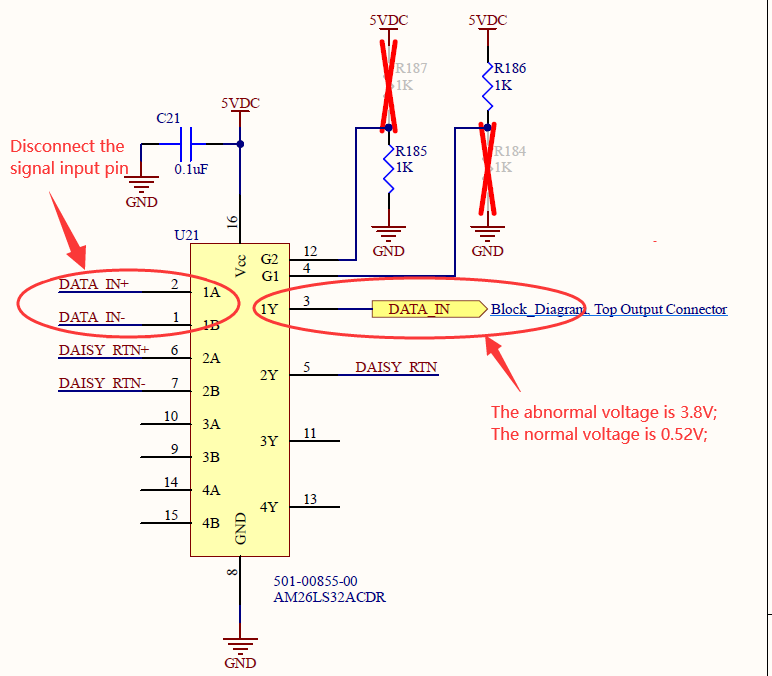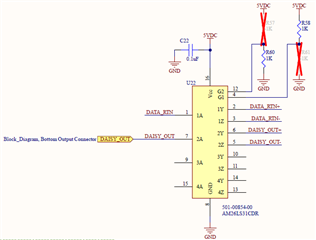Tool/software:
Hi,
We use the AM26LS32AC for the LED control signal, and now, there are more than 10% AM26LS32AC has below issue, please kindly review the schematic
and advise why we have the below issue(The 1Y output voltage is 3.8V and the normal voltage is 0.52V), and it there any improve to avoid this issue, thanks.







